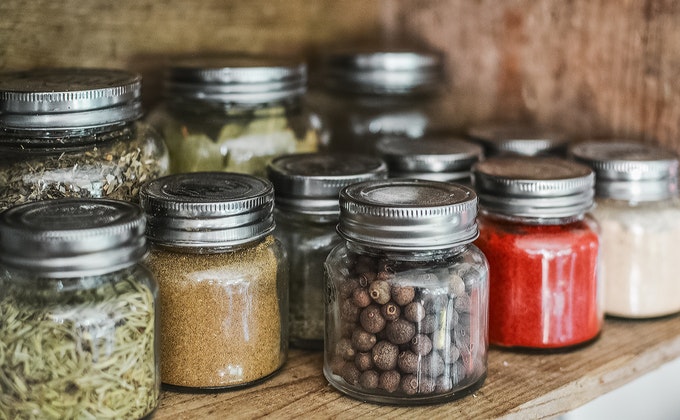Upon moving to a new city a few weeks ago, I quickly became conscious of how much trash my boyfriend and I were creating as we got our apartment together. The garbage can was practically overflowing—as it turns out, buying new furniture creates way too much plastic waste.
But now that we were in our own place, we could turn it into a sustainable, zero-waste paradise soon enough right? Unfortunately, that hasn’t quite panned out either. Our new city doesn’t have a store where you can bring your own containers and buy dry goods in bulk, and we also don’t have composting services, or even a designated place to drop off food waste. When the farmer’s markets start up again with warmer weather, we’ll definitely see if any vendors accept compost, but until then, we’ll have to toss out our food scraps.

Although we couldn’t live a truly zero-waste lifestyle, I was still determined to cut down on our overall trash. Here are a few strategies we’re using to live a lower waste lifestyle—even though our kitchen doesn’t look like a gorgeous, zero-waste Instagram photo.
1. We stocked up on reusables for the kitchen.
We’ve got plenty of canvas bags for grocery shopping, as well as jars, Pyrex containers, and wax wrap to keep leftovers. We also use a French press for our coffee, which means that we don’t need to buy filters. We’ve got cloth napkins and designated towels and rags for cleaning. And of course, we can always bring reusables on the go, like metal straws, thermoses, stainless steel water bottles, and utensil kits.
2. We choose products with recyclable packaging.
Instead of immediately reaching for food packaged in plastic, we try to choose foods that are packaged in either glass or cardboard. For example, I can buy staples like rice, beans, and nut butters in plastic bags or jars, or I can grab rice in a cardboard box, beans in recyclable cans, and nut butters in glass jars. Glass and cardboard are more commonly actually recycled than plastic, which is now not being accepted in many recycling facilities throughout America (and indeed, the world). We can also reuse the glass jars for storing leftovers.
3. We make our own versions of packaged foods.
Making cheaper, healthier banana “nice cream” instead of buying pricey vegan ice cream with wasteful packaging? For me, the choice is easy. We can also easily make our own veggie broth, simply by using leftover veggie scraps. The last time we bought a box of frozen veggie burgers, I was disappointed to open them and realize that they were all in individual plastic packages, so next, we’ll be experimenting with making our own veggie and black bean burgers.
4. We buy bulkier sizes when possible.
This isn’t always an option, but if you’re buying frozen or shelf-stable food, choose the bigger size if there’s room in your budget. It will create a little less waste. Right now, we don’t really feel the need to sign up for a membership with a bulk store like BJ’s or Costco, but if there is one in your area, it might be a good idea—shopping at stores like this can help you save money, too!
5. Shop smart online.
Imagine my disappointment when I finally got around to ordering a package of metal straws online (during the Great Plastic Straw Debate of 2018)—only to find out when they arrived that they were packaged in disposable plastic. I vowed that the next time I bought a supposedly “zero waste” product online, I would consider the packaging, too. The Package Free Shop website has pretty much every household good you could need in recyclable or reusable packaging, and you can even send empty bottles of their shampoo, conditioner, and body wash back for refills.
6. We’re starting to grow our own herbs.
At many grocery stores, fresh herbs are packaged in unnecessary plastic. Our solution? We’re going to grow a few of the basics and get creative. I just planted some aloe seeds, so that I’ll have DIY, package-free aloe vera all summer, and we also have a little herb garden to grow basil and cilantro in the windowsill when spring rolls around. It’s not much, but every little bit helps!
Although we can’t be truly “zero waste” right now, we can still take some important steps towards that lifestyle. If you don’t have access to a good bulk store or composting service, don’t get too discouraged! Even living a “lower waste” lifestyle is a massive improvement, and it’s still something to be proud of.
Also by Jane: Going Through Major Transitions? Ground Yourself With These Self-Care Rituals
Related: How To Encourage Coworkers To Reduce Plastic Waste—Without Being Branded Office Killjoy
Get more like this—Subscribe to our daily inspirational newsletter for exclusive content!
__
Photo: Pexels




